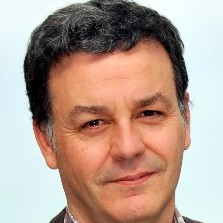Millimeter-Wave (mmWave) Communications
A special issue of Electronics (ISSN 2079-9292). This special issue belongs to the section "Microwave and Wireless Communications".
Deadline for manuscript submissions: closed (30 September 2019) | Viewed by 51821
Special Issue Editor
Interests: wireless mobile communications; antenna design
Special Issues, Collections and Topics in MDPI journals
Special Issue Information
Dear Colleagues,
For the last few decades, the millimeter wave frequency band (30-300 GHz) has been seen as a serious candidate to host very high data rate communications. Firstly used for high capacity radio links, then for broadband indoor wireless networks, the interest in this frequency band has been boosted, as it was proposed to accommodate future 5G mobile communication systems.
The large bandwidth available will enable a number of new use cases for 5G. In addition, due to the large propagation attenuation, this frequency band may present some additional advantages regarding frequency reuse and communication security. On the other hand, however, a number of issues have to be addressed to make mmWave communications viable. A lot of effort is currently being made in the following topics:
- Channel measurement, modeling, and estimation;
- Antenna design and antenna measurement;
- Beamforming and energy efficiency;
- Commercial hardware design and development;
- MIMO and massive MIMO (m-MIMO);
- Multicell cooperation;
- Network planning and interference;
- System performance assessment and optimization;
- New case uses and applications.
Because of this strong effort, new advances are made on these topics every day. The main objective of this Special Issue is to report on the latest advances on mmWave communications. The topics of interest include, but are not limited to the list above.
Prof. Manuel García Sánchez
Guest Editor
Manuscript Submission Information
Manuscripts should be submitted online at www.mdpi.com by registering and logging in to this website. Once you are registered, click here to go to the submission form. Manuscripts can be submitted until the deadline. All submissions that pass pre-check are peer-reviewed. Accepted papers will be published continuously in the journal (as soon as accepted) and will be listed together on the special issue website. Research articles, review articles as well as short communications are invited. For planned papers, a title and short abstract (about 100 words) can be sent to the Editorial Office for announcement on this website.
Submitted manuscripts should not have been published previously, nor be under consideration for publication elsewhere (except conference proceedings papers). All manuscripts are thoroughly refereed through a single-blind peer-review process. A guide for authors and other relevant information for submission of manuscripts is available on the Instructions for Authors page. Electronics is an international peer-reviewed open access semimonthly journal published by MDPI.
Please visit the Instructions for Authors page before submitting a manuscript. The Article Processing Charge (APC) for publication in this open access journal is 2400 CHF (Swiss Francs). Submitted papers should be well formatted and use good English. Authors may use MDPI's English editing service prior to publication or during author revisions.
Keywords
- mmWave
- 5G
- wireless communications
- radio channel
- MIMO and m-MIMO
- antenna beamforming
- precoding
- multicell cooperation
- energy efficiency






